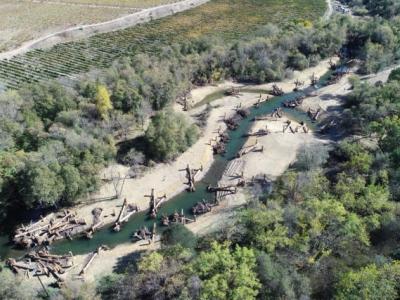Innovations in the Science and Management of Dry Season Water Supply for Salmonid Recovery in California
Session Coordinator:
Tim Bailey, Institute for Sustainable Forestry
Projected future low flow conditions represent an existential threat to the viability of aquatic ecosystems throughout California. The competition for scarce water resources during the long dry season is one of the fundamental challenges for Salmonid populations throughout the State. Finding solutions that respond to these water supply challenges is going to require both sophisticated hydrologic models and the broad adoption of beneficial cultural practices for watershed management. This is a venue to share advances in our growing understanding watershed ecohydrology. The session will profile recent progress developing hydrologic models at a hillslope and watershed scales, surface flows and ground water interactions, and adaptive watershed management strategies that are being deployed to respond to the escalating climate emergency.
The Salmonid And The Subsurface: The Importance Of Rock Type For Understanding And Sustaining Northern California Aquatic Ecosystems
David Dralle, UC Berkeley
Predicting The Spatial And Temporal Distribution Of Wetted Habitats In Intermittent Streams And Its Implications For Long-Term Drought Impacts
Hana Moidu, UC Berkeley
Lessons from Low Flow Monitoring and the Impacts of Drought on Streamflow Conditions in Small Coastal Watersheds
Mia van Docto, Trout Unlimited
Quantifying Ecological Risk From Diversion Rates During The Hydrograph Recession In The South Fork Eel River
Emily Cooper, Humboldt State University
Benefits Of Agricultural Water Conservation Strategies To Improved Summer Low Flows, Navarro River Watershed, California
Christopher Woltemade, Shipensberg University
Roll Your Own Data Logger: Use The Mayfly Solar Powered Computer Board To Automate Collection Of Low Flow Physical Stream Conditions
Neil Hancock, Independent Software Developer

